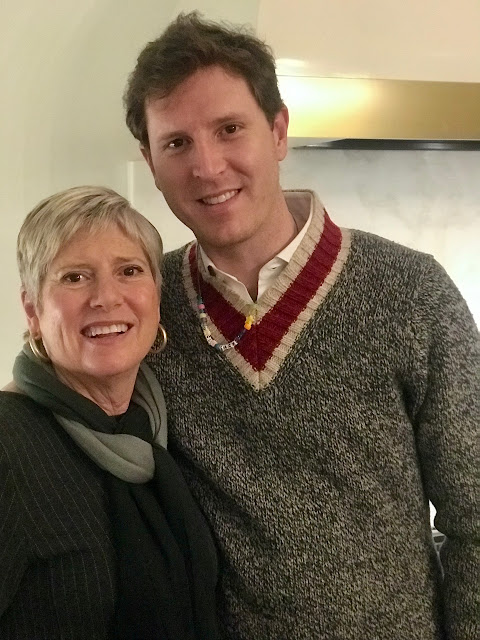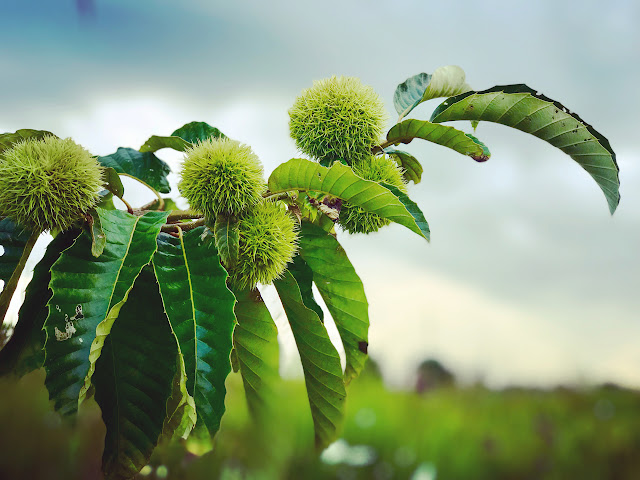The past two weeks found us traipsing around Spain’s Extremadura region. If you haven't heard of it, don't feel bad; I hadn't either, until Ed suggested we go there. It runs west from Madrid to Spain's border with Portugal. It is perhaps Spain's least-visited region and English is rarely spoken. It is for that very reason that we liked it. It felt like we were traveling back in time to experience the Roman Empire, the Moorish conquest, and Spain's Golden Age.
Extremadura is a remote area, filled with dramatic mountains, miles upon miles of olive and oak trees, grazing black pigs, road-crossing sheep, and Roman, Visigoth and Arab ruins set amongst medieval towns.
It is the perfect place to practice “Slow Travel.” Like the Slow Food movement, it requires one to slip into the pace of the local culture…. You know: Purros (fat churros) and hot chocolate for breakfast, long walks in the old towns, perhaps a stop at a museum or a UNESCO site, breaks for people-watching and a café con leche in the town square, late lunches followed by siestas, before heading out for an evening stroll and tapas – hours past our usual dinner hour (and sometimes past my usual bedtime!).
We are learning the art of Slow Travel from the best: We were with our son, Jack, and his girlfriend, Kasia, for the first part of the trip and then just Jack for the middle part. They are expert Slow Travelers, knowing how to focus on things that locals do everyday and experiences that leave a lasting imprint upon your heart.

Jack and Kasia share the mindset that the quality of travel experience is more important than the quantity of experiences. I watch them being completely present in the moment, not racing to the next must-see tourist attraction or constantly posting on Instagram. They choose to stroll the winding path through the town’s park rather than the shortcut through busy streets. They seek out a bar serving only local sherries, whose interior has not changed since the days of the Spanish Civil War when Hemingway hung out there. They find flamenco dancers performing in an intimate old arched room for us to enjoy, along with a glass of sangria, and they lead us to a small, quiet museum with beautiful paintings by a single artist. They understand that Slow Travel emphasizes connection to local people, cultures, food and music.

S
Ed and I were on our own for the last five days of the trip and, in an effort to adopt Jack and Kasia’s outlook, we found we could be comfortable leaving whole days and nights with nothing planned (including where to stay) and seeing where it leads us.…
So here is what we found:
• We basically ate and drank our way through the region. If you love to eat, Extramadura is the place to be. The local food is excellent (unless you are a vegetarian!). While the whole of Spain is known for its ham, this region produces some of the best: Jamón Ibérico de Bellota, ham from the acorn-eating black Ibérico pig, melt-in-your mouth slices of dark-red cured meat. When unsure of what to order, we simply asked our waiter for a recommendation — and we were always delighted with the selection.
.jpg)
• We lost ourselves in the Spain of the past. We explored Roman ruins that rival even a trip to Italy. In Mérida alone, we wandered the UNESCO World Heritage sites of the Roman Amphitheater and Theatre, the Temple of Diana, and the National Museum of Roman Art. In Guadaloupe, we were guided through the 14th century Royal Monastery of Saint Mary of Guadalupe, marveling at the cloister's art and vestments. I was especially starstruck with the room full of illuminated manuscripts: Huge books hand-lettered with detailed borders and illustrations.
• We sat a spell. We found that the place to head upon arrival in any town is the Plaza Mayor. We'd sit with a café con leche or beer and watch the world go by.
• We were blessed. We peeked into the attached church of Our Lady of Guadaloupe Monastery on a Sunday morning and ended up staying for the entire mass, (in Spanish!). Turns out, it is the very same church where Columbus gave thanks upon his return from the New World.
• We talked to locals (well, actually, Ed talked; I listened, uncomprehendingly). Despite less than perfect Spanish, he engaged in conversations with shop clerks, waiters, hotel receptionists, young pilgrims. His attempts at conversation were well-received (sometimes comically) and helped us feel connected to the local people.
• We learned that one doesn’t have to see it all. We tell ourselves that there is "always a next time." Seven years ago we fell in love with the Portuguese mountain town of Marvão, but could only stay for an afternoon. We vowed to come back -- and we did on this trip, spending the night within its medieval walls and enjoying a lovely lunch and late-night dinner.
So, if we didn’t see every museum, climb every castle tower, stand in awe at every cathedral, it was okay. We will come back another time. But for this time, we tried to savor every moment, oh so slowly.
Highlights
Madrid
Sorolla Museum: showing paintings by Joaquin Sorolla, set in his former family home
Avila
Chuchi Pasteles: Pastry shop known for its yemas, made of only egg yolks, granulated sugar and water with a confectioners' sugar coating.
Salamanca
Cáceres
Mérida (day trip)
Roman ruins (World Heritage Site) Roman Theatre, Amphitheatre, and The Temple of Diana
Marvão
Guadeloupe
------------------------
And for memory sake, here are few more pictures to help us remember our time Slow Traveling together.















.jpg)




.jpg)
.jpg)


.jpg)

.jpg)












.jpg)




.jpg)






.jpg)









.jpg)



